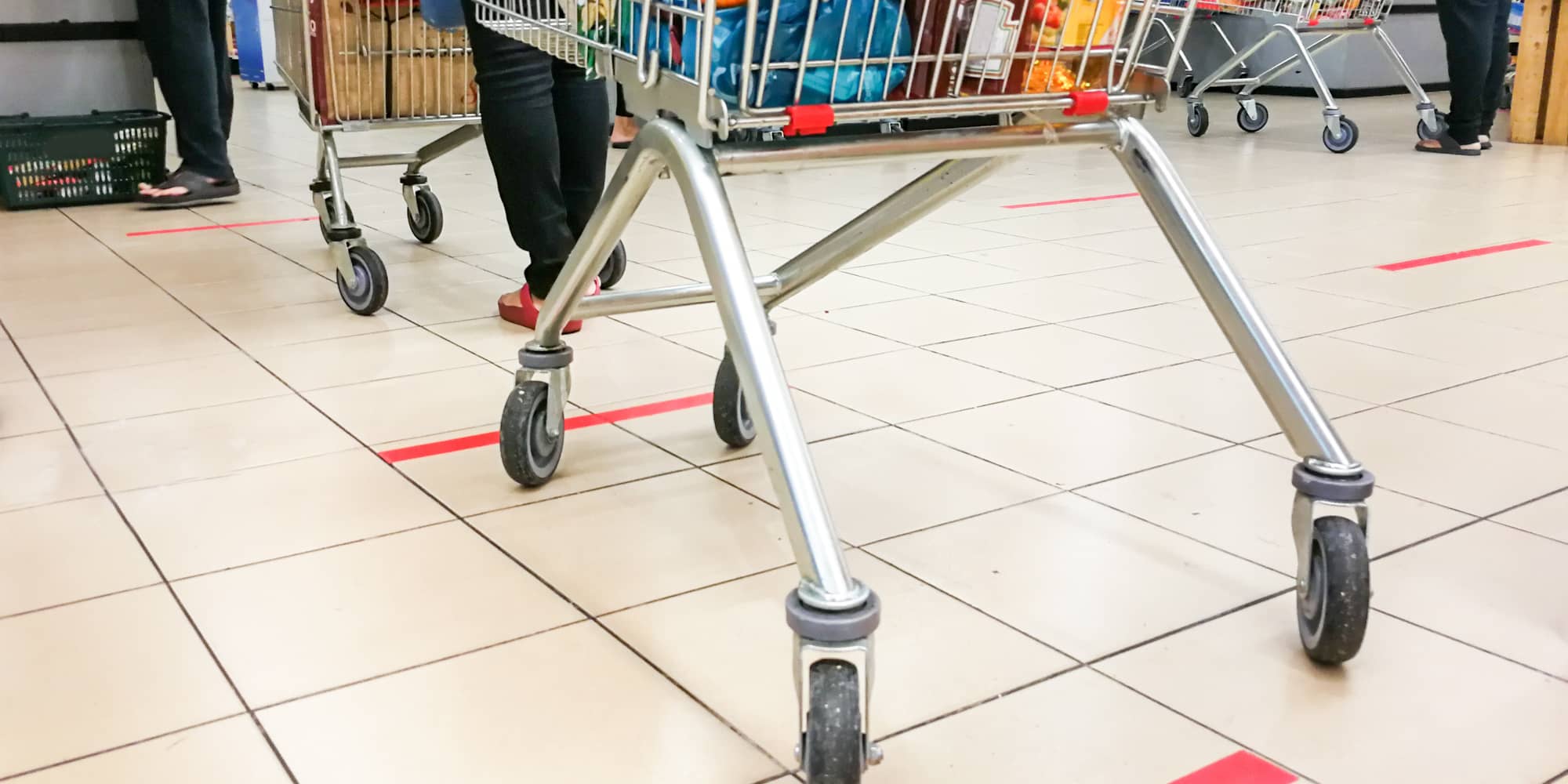How can retailers optimize their space and assortments post-COVID-19?

- 4 minute read
- Dr David Waters
How a retailer chooses to organize its store layout design and allocate items to fill it, suggests David Waters, Chief Scientist, is Retail 101. On the surface, this sounds simple. But most would probably admit that their current product proposition is far from optimal and the COVID-19 trading environment has only compounded this.
The substantial growth of online shopping
Modern retailing is fluid, but the rate of change is accelerating. Through COVID-19 there has been a game-changing customer switch to online shopping, and we have seen a shopping mission shift to the return of the big weekly shop, after a decade of growth and focus on top-up and convenience baskets. These changes have presented grocery retailers with unprecedented fulfillment challenges and there is no doubt that this is putting pressure on store space.
Tesco announced this week that it was the first retailer in the UK to deliver 1m orders, and within weeks will have doubled the number of online delivery slots from 660k to 1.2m weekly. Similarly, Loblaw Canada started to use the front of store space to consolidate online orders, and Countdown has temporarily closed six stores to customers to provide dark store capacity. Online grocery sales in March increased by 13% year-on-year v IGD’s pre-Covid-19 forecast of 7.8%, and stores have restricted opening hours to give enough hours to fill the shelves.
The implications for store assortments have been relatively modest to date. For example, some retailers have reduced the number of product variants to bolster production of core lines, and many introduced tertiary branded products where supply was limited. But the fundamentals of space and assortment choices have primarily remained static, with retailers having to work with what they have during the COVID-19 crisis. Despite the uncertainty as to what the long-term ‘new normal’ will look like, we can be sure that social distancing will be with us for many months as we feel the effects of the economic aftermath and its implications for consumer spending and behaviors.
So why has such a fundamental legacy challenge become so misaligned to customer needs and desires? Is the concern that high transition costs and shop floor disruption will not deliver a sustainable return? Or is it because the science behind retail store layout and assortment optimization is failing to provide the right insight?
Space allocation across a retail store layout is essential
After merchandise and staff costs, real estate is the next largest P&L line and so maximizing return on space is essential, especially in a low margin grocery retail operation. Space allocation becomes even more critical with the dilution of margin from the growth of online. But getting to an understanding of the relative value of space is complex. Providing enough space across a retail store layout to handle online fulfillment volumes and to keep shelves stocked, as well as diminishing returns from other cost levers, means retailers need to face into the space challenge. We are usually set one of two objectives:
- To reallocate space to achieve more sales from the same space (optimize). Or -
- Free-up space to earn at least the same revenue from less space (consolidate) and, in the case of COVID-19, provide the space for staging of online order totes.
Space allocation at the micro (item) level is critically important to achieving either of the objectives above. Item choice complexity has increased over the years. Many retailers stock more than 20-30,000 items per store. The concept of filling the space through a simple ‘core’ plus ‘overlays’ approach can provide some modest returns, but to maximize returns, robust store and item clustering methods, together with cross-purchasing analysis is vital.
Analysis of store assortments regularly finds a quasi-Pareto curve – 30% of store space delivers 70% of sales or similar. Such patterns are not really a surprise. Assortments will always have a tail. But with the pressures for online fulfillment and on-shelf availability (it really goes without saying that good availability not only delights customers, but also creates the fundamental conditions to build an online store-pick model) tolerating long tails in the assortment may no longer be sensible.
In our work on assortment planning, we have found revenue gains of 5% are achievable from simple macro-space changes to product adjacencies and bay counts. Micro-space changes contribute to even more significant value to sales. From a combination of item deletions and inclusions, changes range between 10% and 64% of item/store combinations, and revenue gain is as high as 19.6%. Our models are mathematical, but they prompt evidence-based discussion on the roles of items in the range and this is where the science meets the art of category management.
The return to normal
There is no doubt this is a turbulent time for all industries. But for retailers who can think through and beyond the COVID-19 crisis, their adoption of data-driven tools and technologies will enable them to advance their customer proposition rapidly and stay one step ahead of their peers in aligning their business to the ‘new normal’.
Get in touch
Written by Dr David Waters
David joined the team in 2011. Drawing on his extensive background in science and mathematics, David designs quantitative, pragmatic solutions to solve the biggest problems facing our customers.
